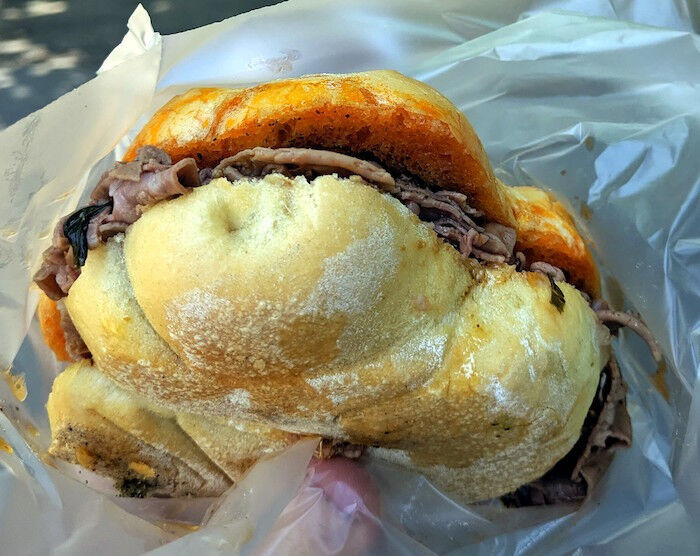Lampredotto: Florence’s secular street food

The Tradition of Lampredotto in Florence
Lampredotto is a quintessential street food in Florence, deeply rooted in the city's culinary traditions and history. Its origins reflect the ingenuity and resourcefulness of Florentine cuisine, particularly the "cucina povera" or peasant cooking style, which emphasizes the use of inexpensive and readily available ingredients.
Historical Origins
Lampredotto dates back to the Renaissance period, a time when Florence was a bustling hub of trade and culture. During this era, the consumption of offal (organ meats) became popular among the working class, who sought affordable yet nutritious food options. Lampredotto, made from the fourth stomach of the cow (abomasum), was a perfect fit for this need.
The name "lampredotto" is derived from "lampreda," an ancient type of eel that was once common in the Arno River. The texture and appearance of the dish are said to resemble this eel, hence the name. As lampreys became less common, the dish evolved, and the name was retained.
Culinary Tradition
Lampredotto is typically slow-cooked in a broth with tomatoes, onions, celery, and parsley until it becomes tender. The resulting stew is then served in a sandwich (panino) or on its own, often accompanied by salsa verde (a green sauce made from parsley, garlic, capers, and anchovies) or a spicy red sauce.
The tradition of eating lampredotto has been kept alive by the "trippai" (tripe sellers) who set up food stalls throughout Florence. These trippai have been an integral part of the city's culinary landscape for centuries, serving lampredotto to both locals and visitors. The dish is especially popular among workers, students, and tourists looking for an authentic Florentine experience.
Cultural Significance
Lampredotto is more than just a dish; it is a symbol of Florence's culinary heritage and its ability to turn humble ingredients into beloved staples. It represents the city's history, culture, and the resilience of its people.
Today, lampredotto continues to be a popular street food in Florence, enjoyed by a wide range of people. It is celebrated in food festivals and has even gained recognition in gourmet circles as an example of traditional Florentine cuisine.
Lampredotto and the Ponte Vecchio
Interestingly, the tradition of lampredotto is closely linked to the history of the Ponte Vecchio, Florence's iconic medieval bridge. The Ponte Vecchio, which spans the Arno River, was originally home to butcher shops in the Middle Ages. The butchers would discard waste and offal into the river, which attracted locals looking for affordable meat products. This practice eventually led to the creation of dishes using these less desirable cuts, such as lampredotto.
In 1593, however, Ferdinand I decreed that the butchers should be replaced by goldsmiths and jewelers to improve the smell and aesthetics of the bridge. Despite this change, the tradition of using offal in Florentine cuisine persisted, leading to the enduring popularity of lampredotto.
The Role of Meat in Florentine Cuisine
Florence has a long history of using all parts of the animal in its cuisine, a testament to the city's resourcefulness. Alongside lampredotto, other dishes such as trippa alla fiorentina (Florentine tripe) and fegatini (chicken liver pâté) showcase the city's commitment to "nose-to-tail" cooking. This approach not only minimizes waste but also creates a rich culinary tradition that celebrates every part of the animal.
Where to Try Lampredotto
For those visiting Florence, trying lampredotto from a traditional trippai is a must. Some well-known locations include:
Nerbone: Located in the Mercato Centrale, Nerbone is famous for its lampredotto sandwiches.
L’Antico Trippaio: Situated near Piazza della Repubblica, this trippai is a favorite among locals.
I Trippaio di San Frediano: Located in the Oltrarno district, this stand is known for its flavorful and authentic lampredotto.
Try one of MaMa Florence's lunch tours to sample lampredotto and visit historical eateries!
Conclusion
The tradition of lampredotto is a testament to Florence's rich culinary history and the enduring appeal of its street food culture. From its humble origins to its status as a beloved local delicacy, lampredotto embodies the spirit of Florentine cuisine—simple, flavorful, and deeply rooted in tradition.
